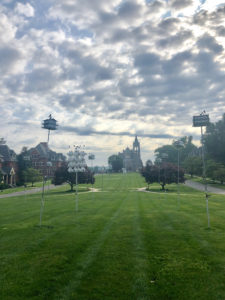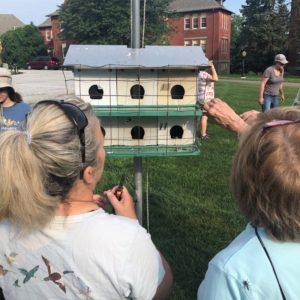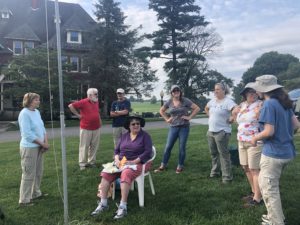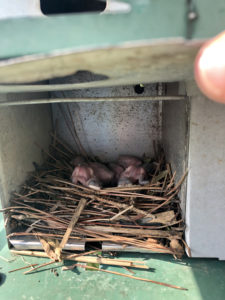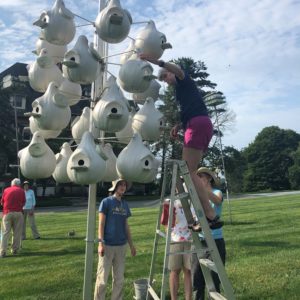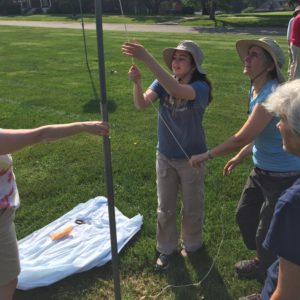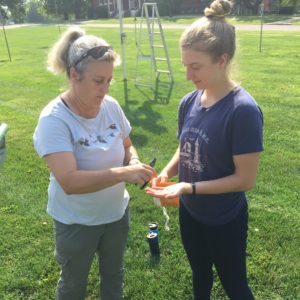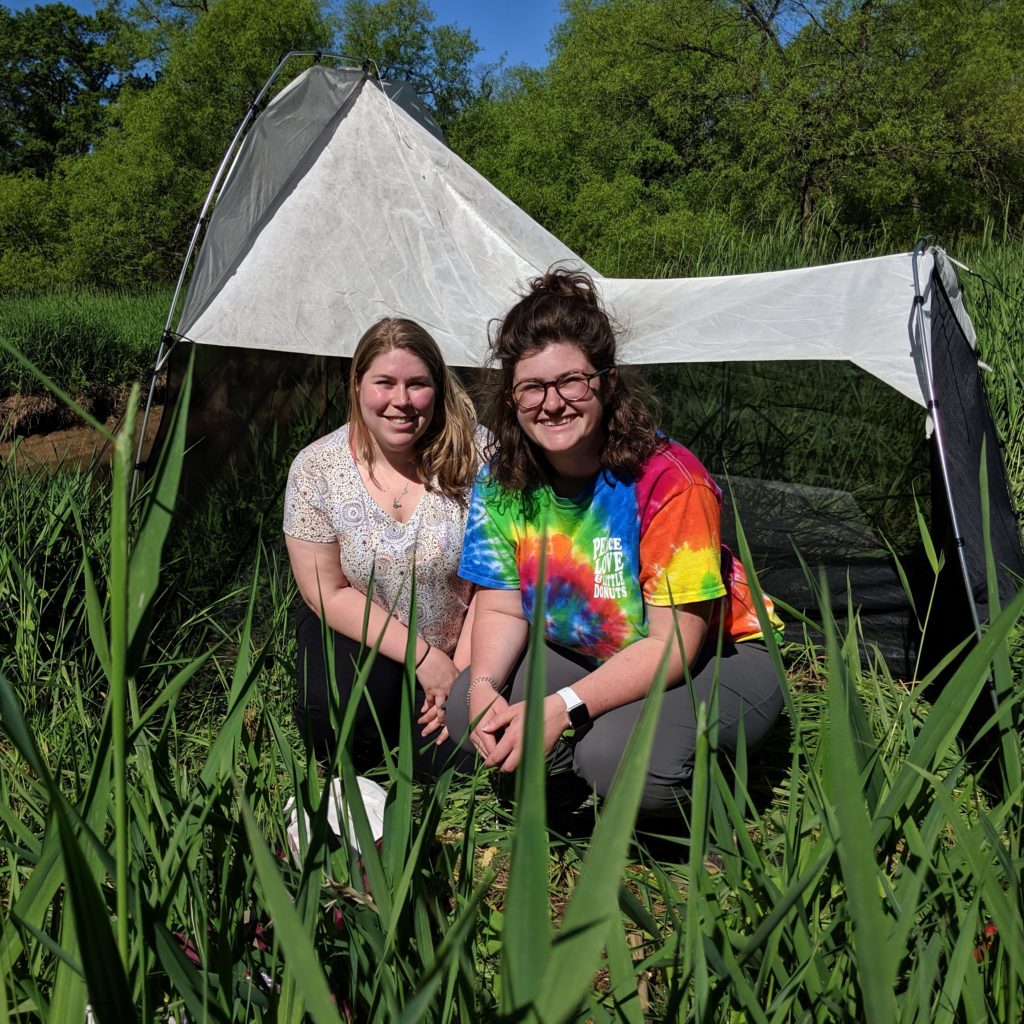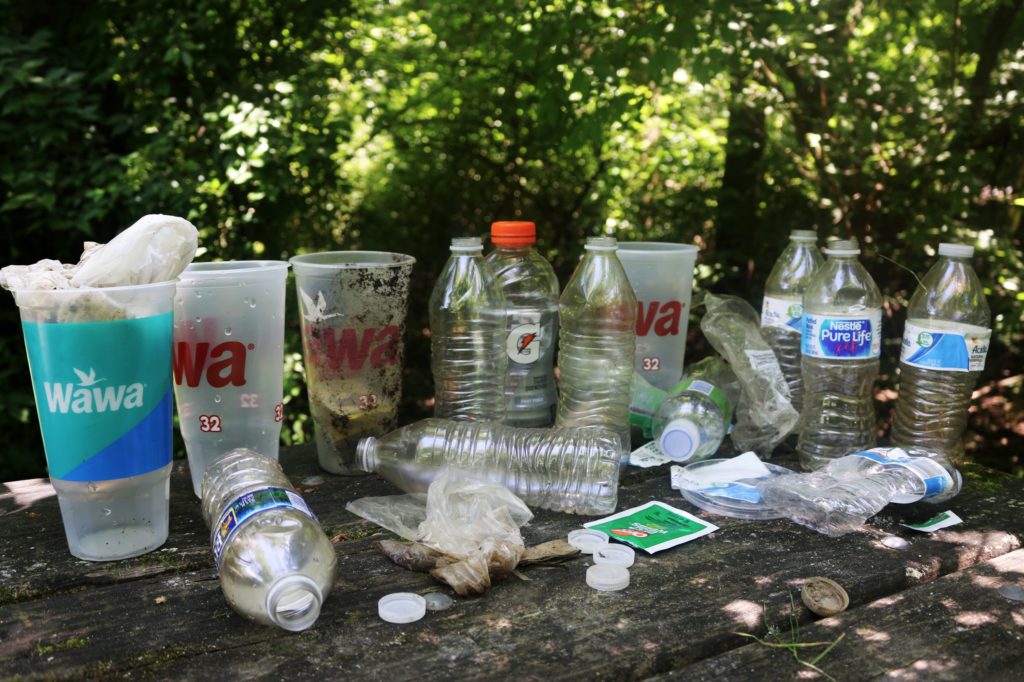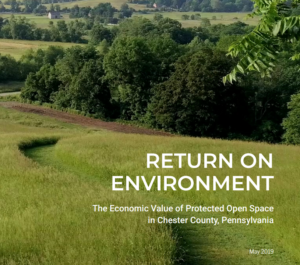In the haze of a steamy May morning, a team of volunteers, students, and Trust staff met in the dewy, northern meadow of Ashbridge Preserve. This meadow is the result of decades of sediment build up behind an old dam. The lake that existed here since the dam was constructed in the early 1900’s was drained when the dam breached.
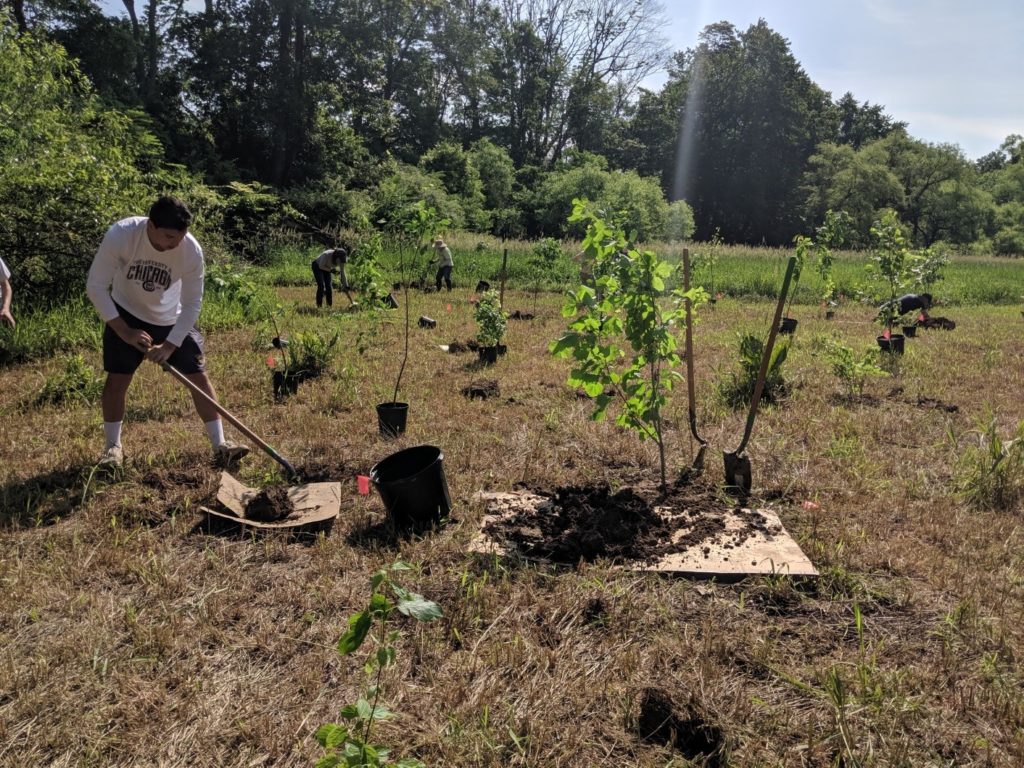
Now, over 20 years since the dam failed, the resulting meadow is overrun with exotic grasses and vines. These nonnative species have shallow root systems, which do not offer much support for the rapidly eroding stream banks nor do they provide shade for Ridley Creek, which suffers ill effects from sweltering summer sunlight.
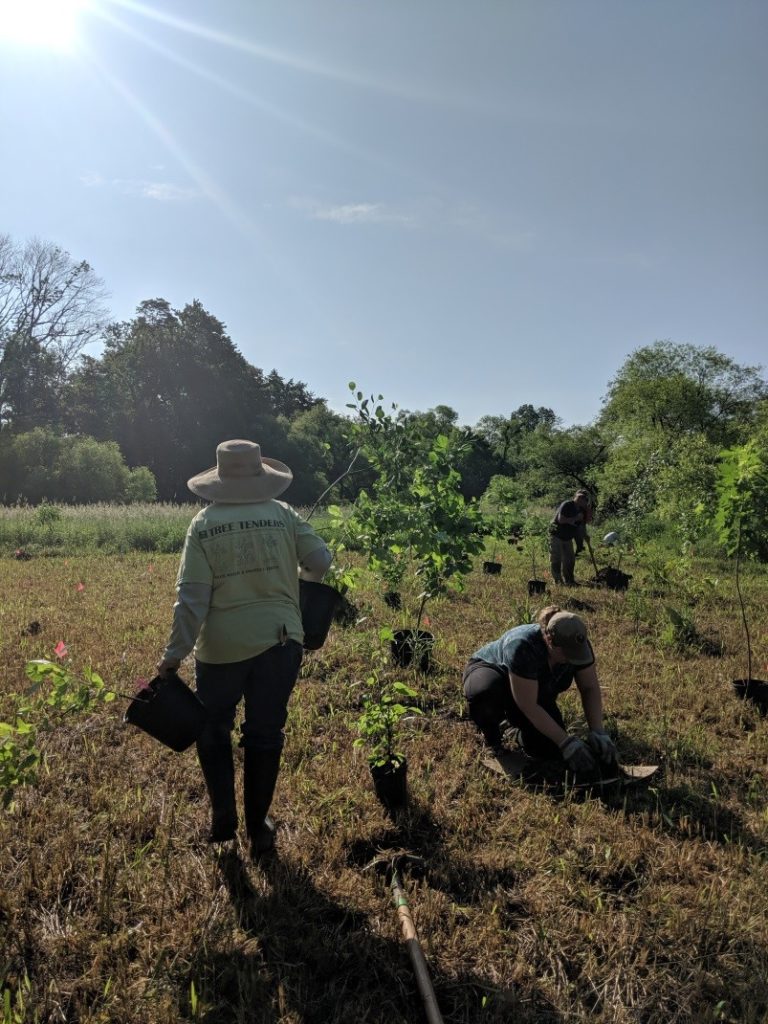
Direct sunlight can cause water temperatures to increase, which can be stressful for an aquatic environment. Further, when the soil from stream banks erodes quickly into the stream, it can smother sensitive stream species. Stabilizing the bank using tree roots can slow down the erosion to a level that even sensitive species can handle.
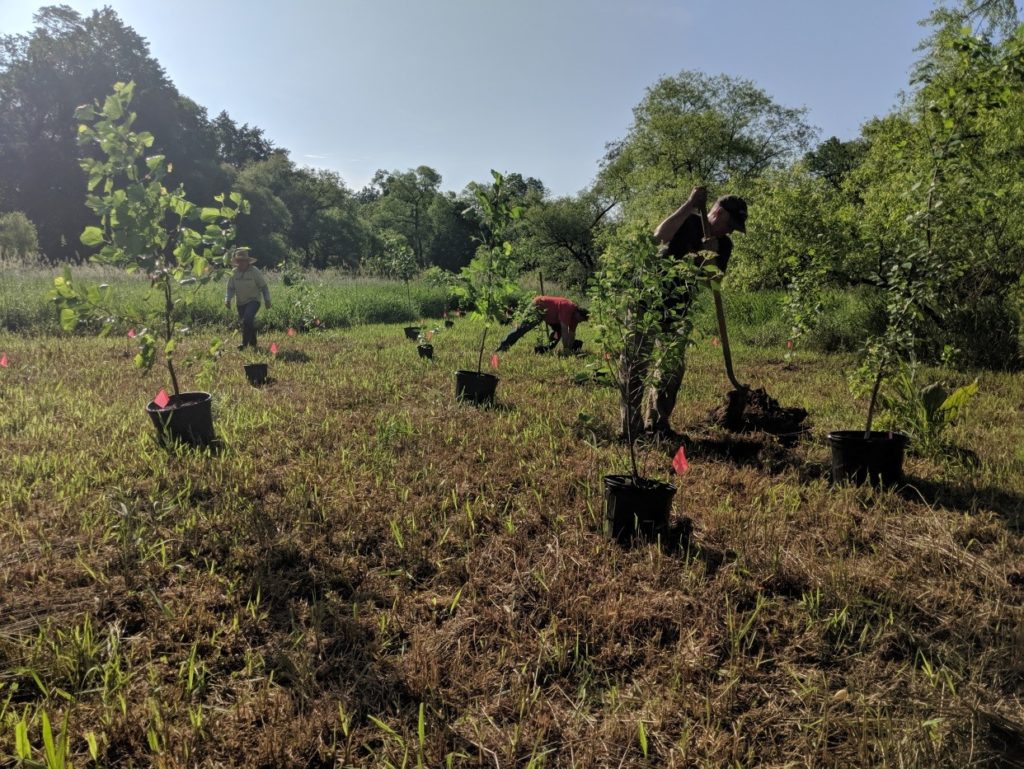
Ashbridge Preserve is owned and managed by Willistown Conservation Trust, who recently acquired funding through the Pennsylvania Department of Conservation and Natural Resources (DCNR) and Tree Pennsylvania to re-plant the streamside forest that historically grew here. Also known as riparian forest buffers, these streamside trees will stabilize Ridley Creek’s banks, shade its water and provide valuable habitat for native pollinating insects. Once mature, the effect of this buffer will be a much healthier stream.
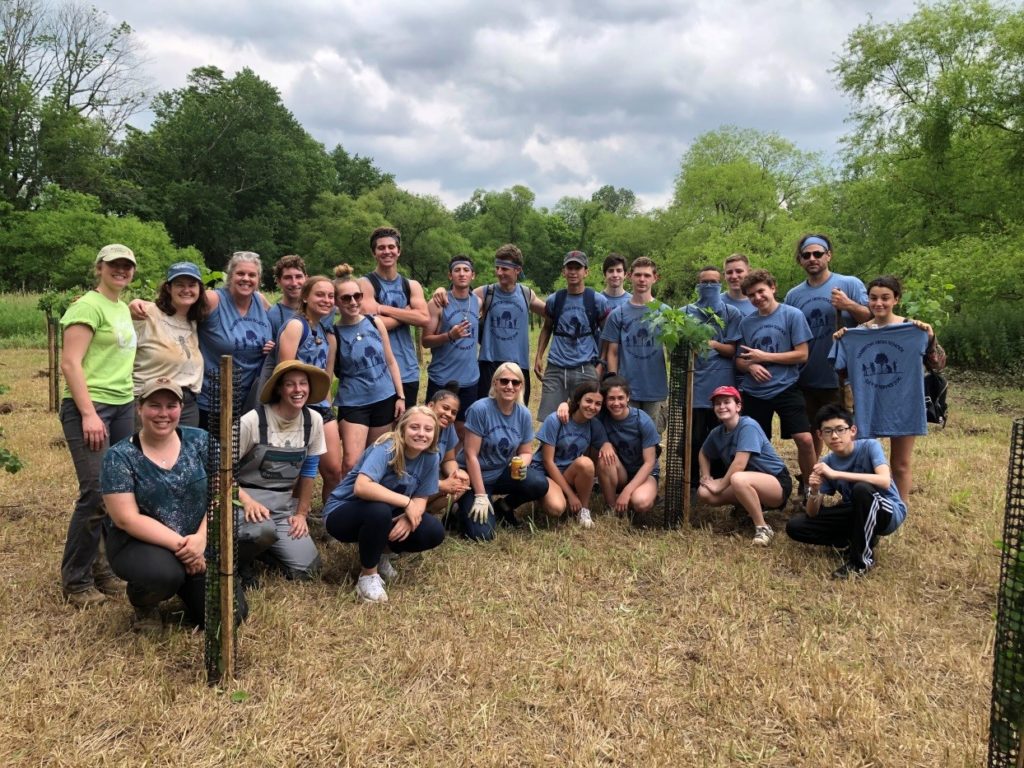
Just before the official start of summer, the Trust was joined by the members of the East Goshen Tree Tenders, students and teachers from Harriton High School, and several community members to plant the first 125 trees of what will ultimately become nearly 5 acres of new riparian forest buffer. On the tail of several severe weather patterns, the air was wet and heavy, but spirits were high!
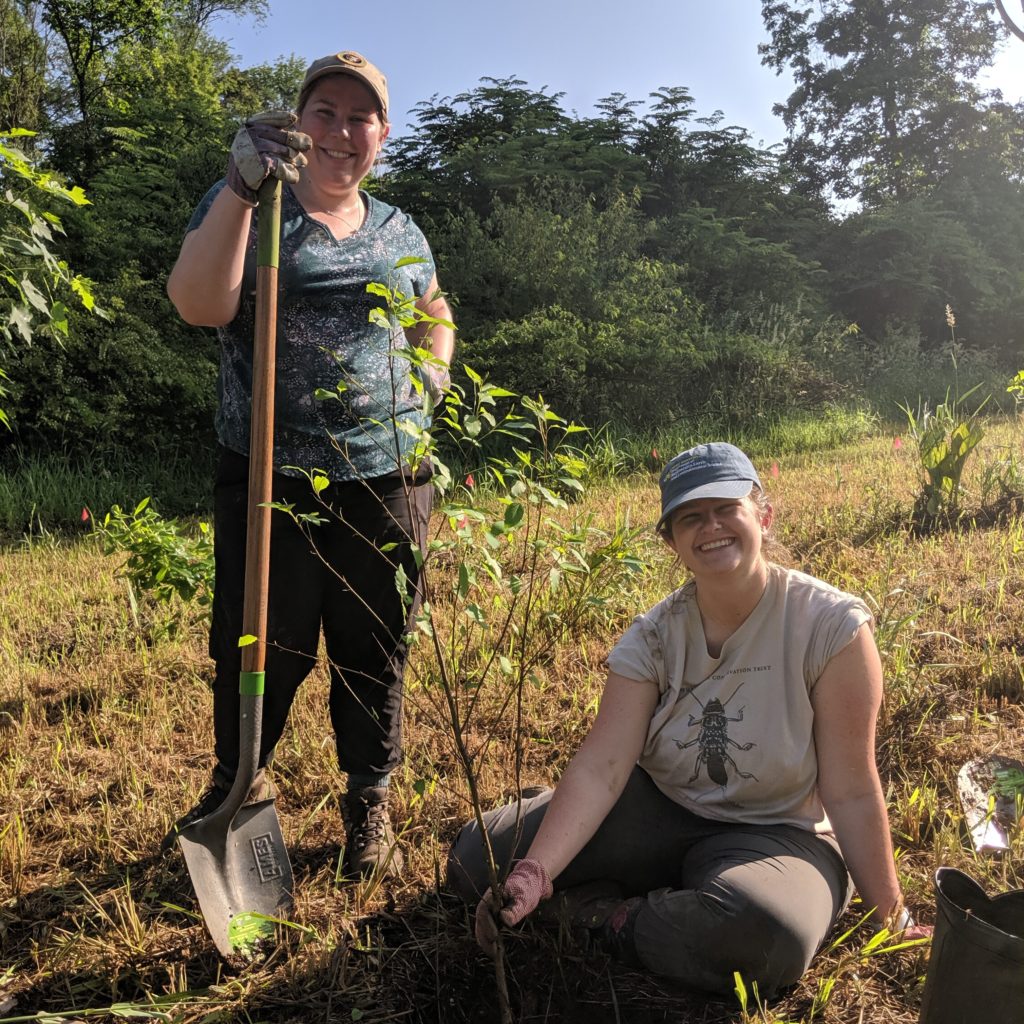
Eager hands and the expertise of the Goshen Tree Tenders made quick work planting, staking, and caging the young trees and shrubs. (By the way, if you missed out on this rewarding and fun event, we’ll be planting more trees in the fall! Watch for details.)
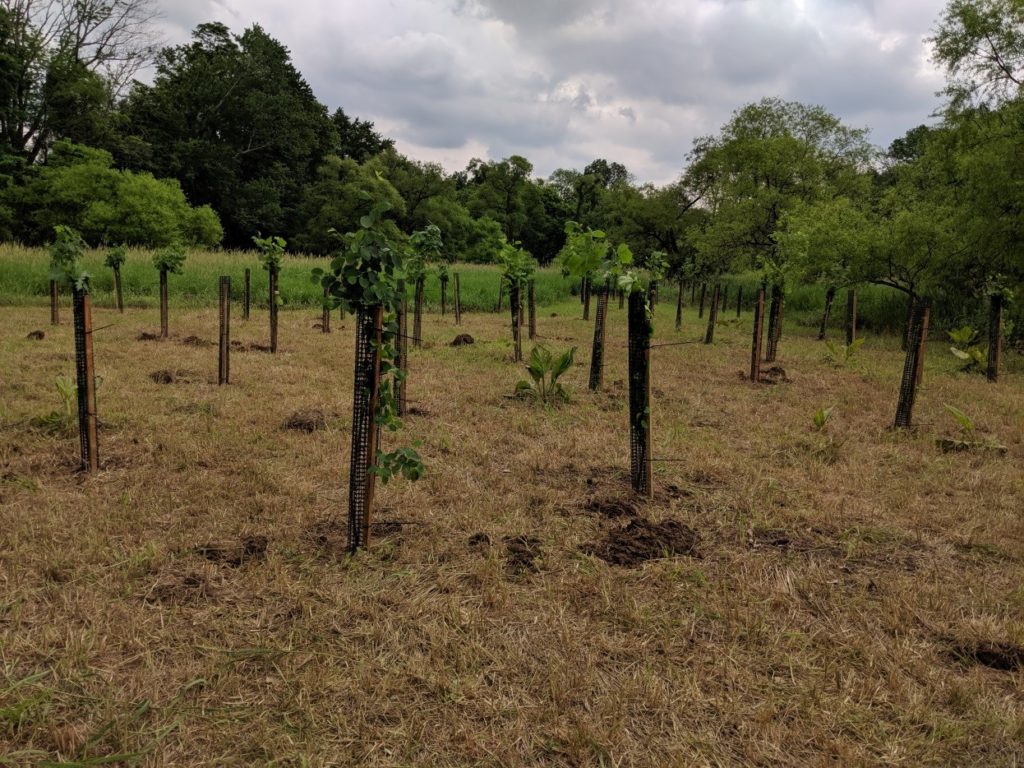
The planting incorporates a diverse assortment of species that share an affinity for the wet soils of Ashbridge’s lakebed, including sycamore, river birch, swamp white oak, and persimmon. Once established, these new trees will help improve and protect water quality, restore animal habitat, and add new beauty to the surrounding landscape!
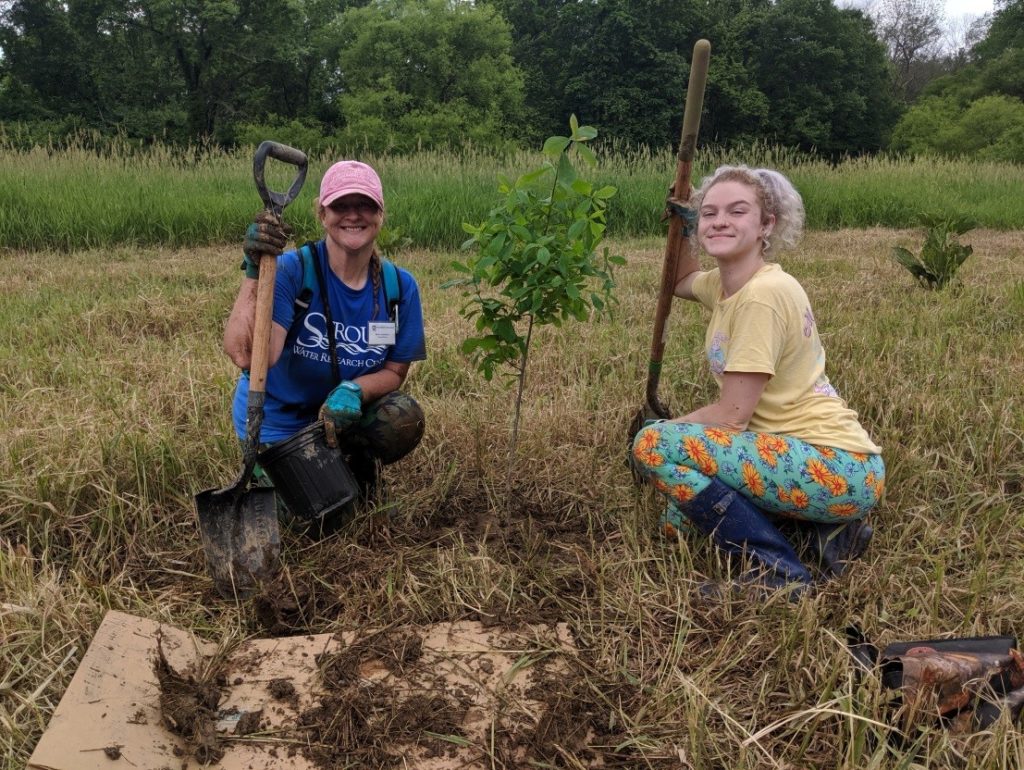
Planting trees + protecting watershed = big smiles!
